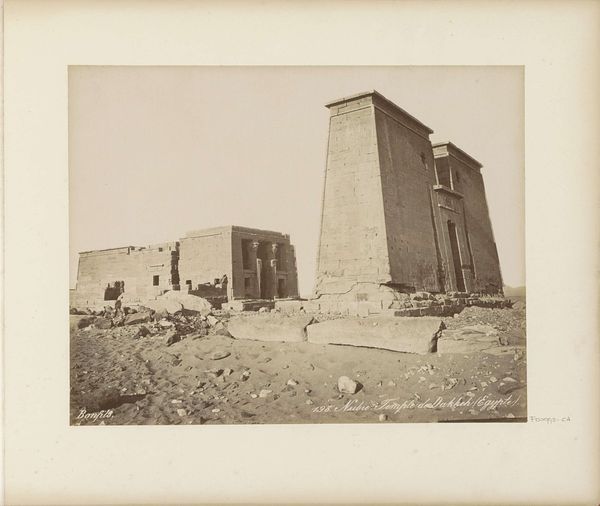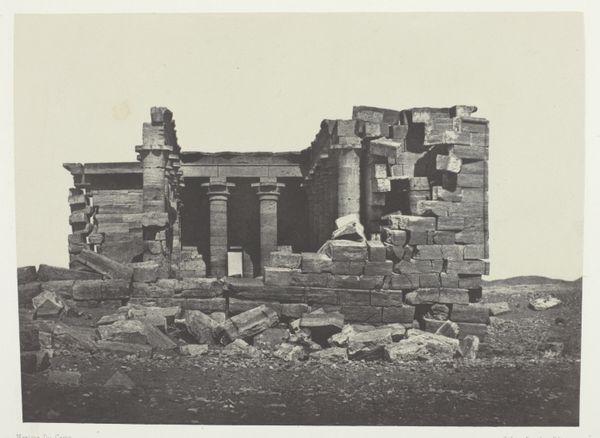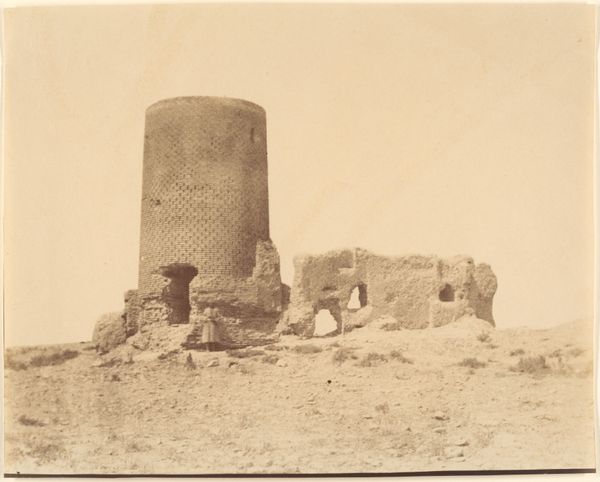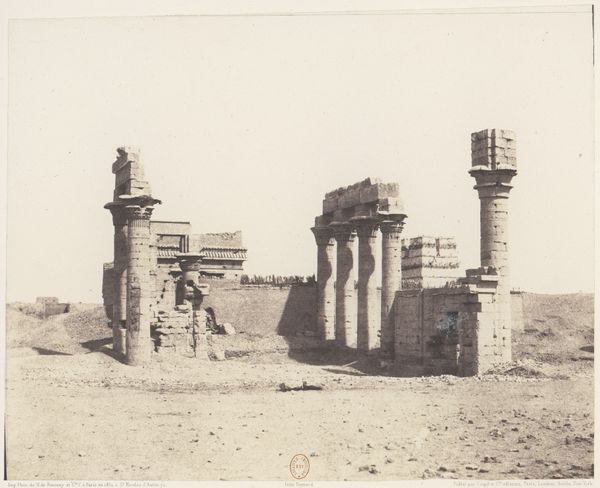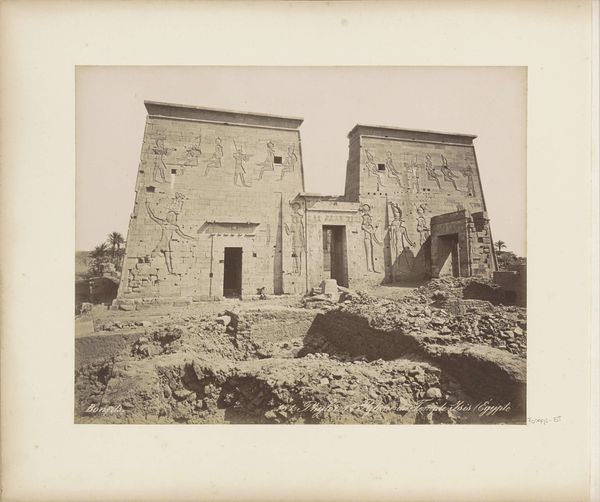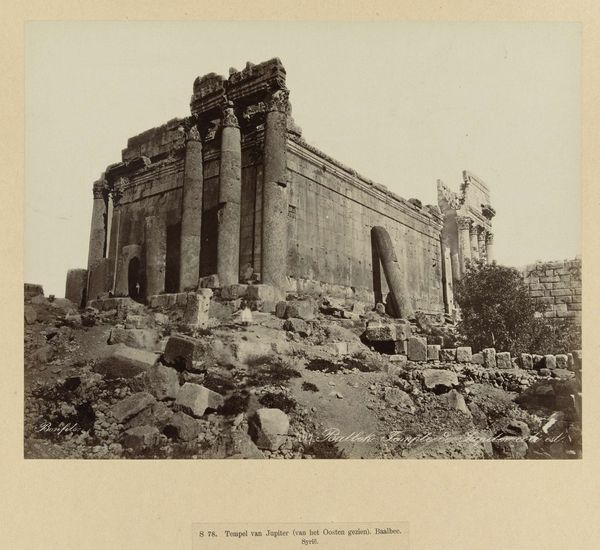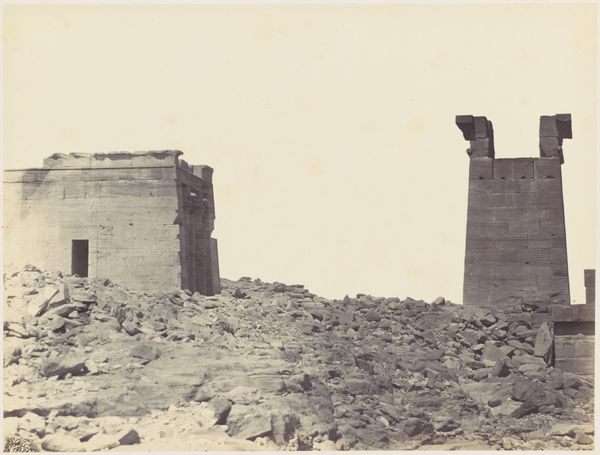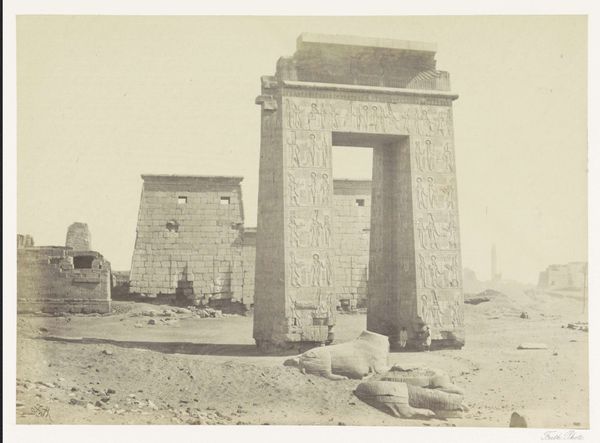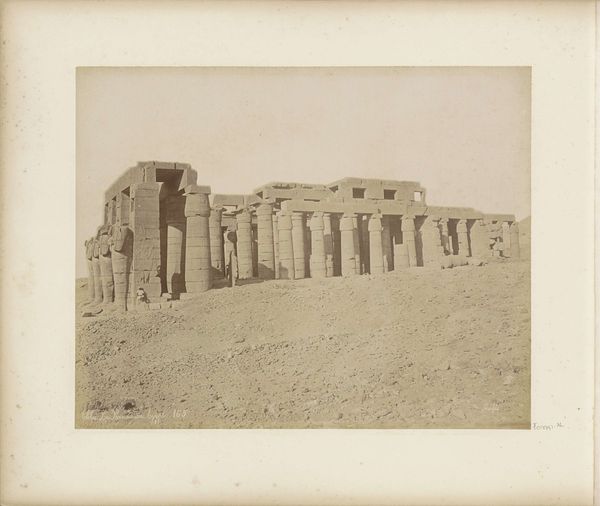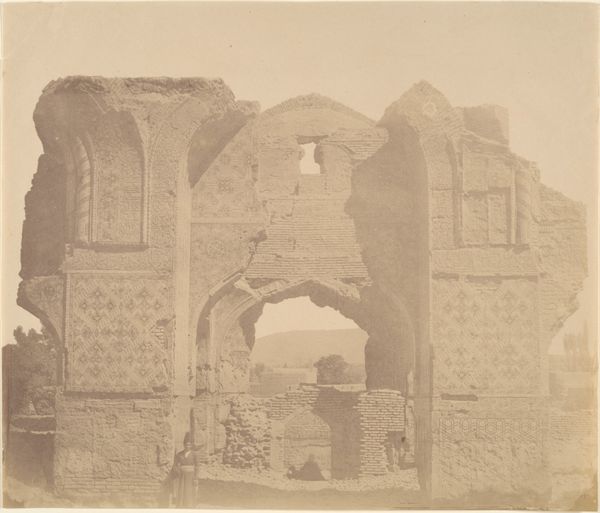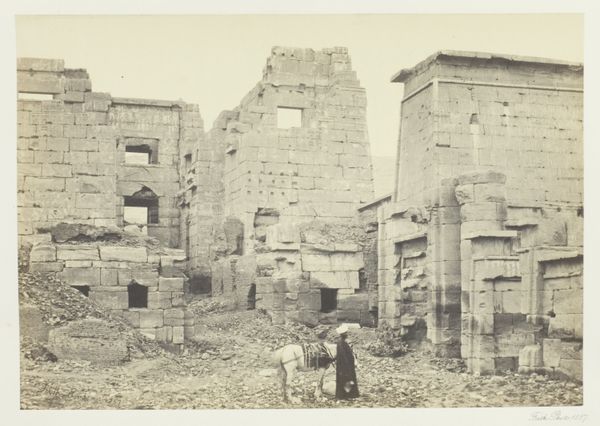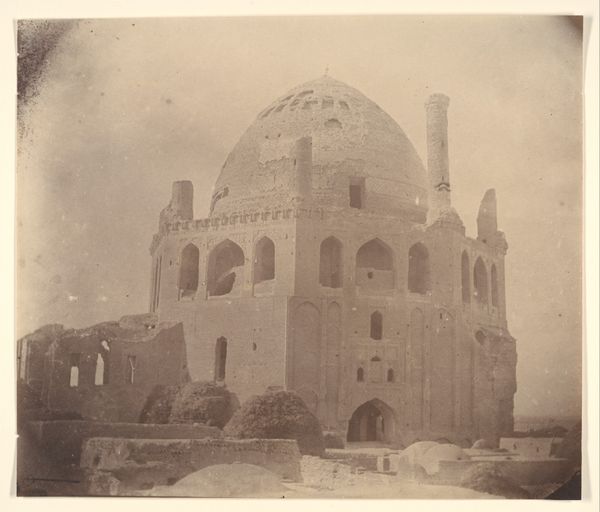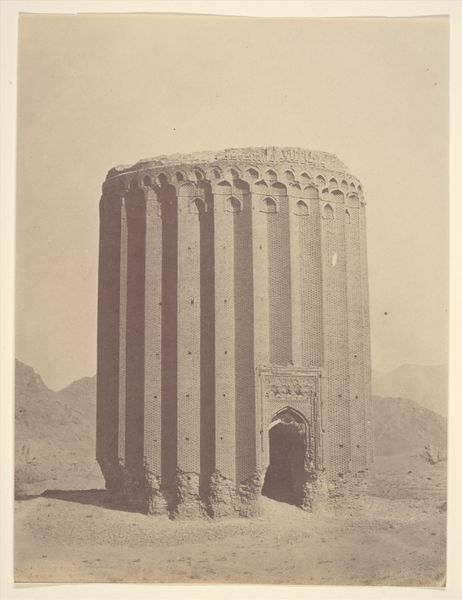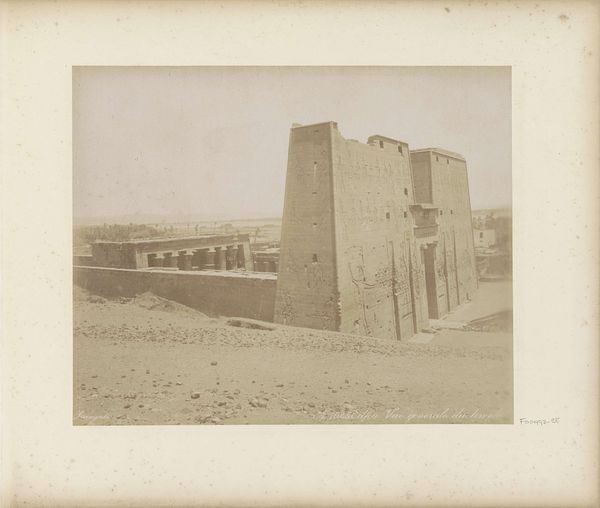![[Other ruins in the town of Tus, Khorasan] by Luigi Pesce](/_next/image?url=https%3A%2F%2Fd2w8kbdekdi1gv.cloudfront.net%2FeyJidWNrZXQiOiAiYXJ0ZXJhLWltYWdlcy1idWNrZXQiLCAia2V5IjogImFydHdvcmtzLzQ1MzVkNGFmLTk0NDUtNGU1NC05N2JhLWQ3MzZkZDNjMDRmYy80NTM1ZDRhZi05NDQ1LTRlNTQtOTdiYS1kNzM2ZGQzYzA0ZmNfZnVsbC5qcGciLCAiZWRpdHMiOiB7InJlc2l6ZSI6IHsid2lkdGgiOiAxOTIwLCAiaGVpZ2h0IjogMTkyMCwgImZpdCI6ICJpbnNpZGUifX19&w=3840&q=75)
photography, site-specific
#
landscape
#
outdoor photograph
#
photography
#
historical photography
#
ancient-mediterranean
#
site-specific
#
19th century
#
outdoor activity
#
islamic-art
Copyright: Public Domain
Luigi Pesce made this albumen silver print, "[Other ruins in the town of Tus, Khorasan]" sometime in the mid- to late-19th century. Photography in the 19th century was tied to European colonial expansion. New image-making technologies were used to document ancient monuments and cities in the Middle East, North Africa, and Asia, often reinforcing western ideas about the "exotic" or "ancient" East. Pesce's photograph captures the crumbling architecture of Tus, in present-day Iran. The image presents a romantic view of decay, emphasizing the monumentality of the ruins against the stark landscape. But we should ask ourselves, what was the image *for*? Photographs like this were collected by European and American museums, libraries, and archives. These images served as visual records but also shaped the way Western audiences perceived these cultures. They circulated as collectibles for wealthy tourists, fostering a sense of ownership over the visual representation of foreign lands. By studying travel accounts, colonial archives, and the history of photography, we can better understand the complex social and political context in which this image was created and consumed.
Comments
No comments
Be the first to comment and join the conversation on the ultimate creative platform.
